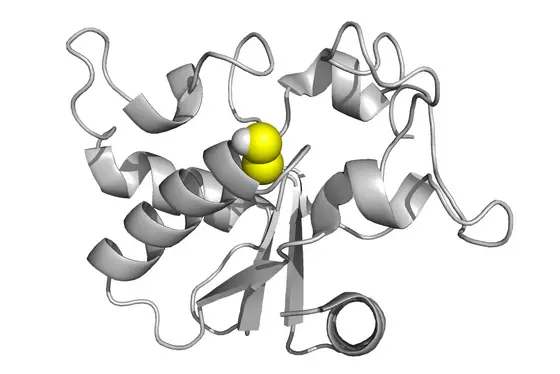After their assembly from single amino acids, the function of most proteins in the cell is regulated by chemical labels. In this process, the chemical groups are only temporarily attached to a protein. Probably the best known example is protein phosphorylation: certain enzymes (kinases) transfer phosphate groups to target proteins, while other enzymes (phosphatases) remove them again. The degree of phosphorylation determines the activity of the protein.
Another very common marker, known as protein persulfidation, was discovered only a few years ago. Here, the amino acid cysteine, a component of almost all proteins, carries an additional sulfur atom. The resulting persulfide group (-S-S-H) is normally lost when proteins are isolated from a cell for examination. Only with special precautions can persulfide groups be conserved and detected. Therefore, despite its frequency, this type of modification has not been noticed for a long time.
Why proteins are persulfidated is puzzling and is of increasing interest to scientists. This is because protein persulfidation increases under stress conditions. And a cell's ability to persulfide proteins appears to weaken with age. However, the fundamental question remains unresolved: Which enzyme is responsible for protein persulfidation?
Researchers led by Tobias Dick at the German Cancer Research Center (Deutsches Krebsforschungszentrum, DKFZ) have now identified for the first time an enzyme in human cells that causes the persulfidation of proteins. It is an enzyme of the sulfur metabolism called mercaptopyruvate sulfur transferase (MPST), which was previously associated with other functions. Brandan Pedre and Deepti Talwar of DKFZ, joint first authors of the current publication, discovered that MPST is highly efficient at transferring sulfur atoms to other proteins. When they turned off MPST in human cells, persulfidation disappeared on dozens of proteins, most interestingly on those that serve to protect the cell.
What is the function of protein persulfidation? Results obtained by DKFZ researchers last year already provide a clue. This is because persulfides also exist in the form of small molecules derived from the free amino acid cysteine. As Tobias Dick's research group has already been able to show, these small persulfides are excellent radical scavengers. They act on the cell membrane and protect it from oxidative damage. The researchers now suspect that proteins are equipped with persulfide groups to specifically protect them from damage as well. Persulfidation could also cause additional activation of protective proteins, similar to phosphorylation. These possibilities are now being further investigated.
Protein persulfidation is also of interest for cancer research. Tumor cells, which are particularly metabolically active, are often exposed to free radicals. To survive, they must prevent ferroptosis, a type of cell death triggered by radicals. Protein persulfidation could promote tumor cell survival and thus would also be a potential target for future drugs.
Pedre B, Talwar D, Barayeu U, Schilling D, Luzarowski M, Sokolowski M, Glatt S, Dick TP: 3-Mercaptopyruvate sulfur transferase is a protein persulfidase.
Nature Chemical Biology 2023, DOI: 10.1038/s41589-022-01244-8.
